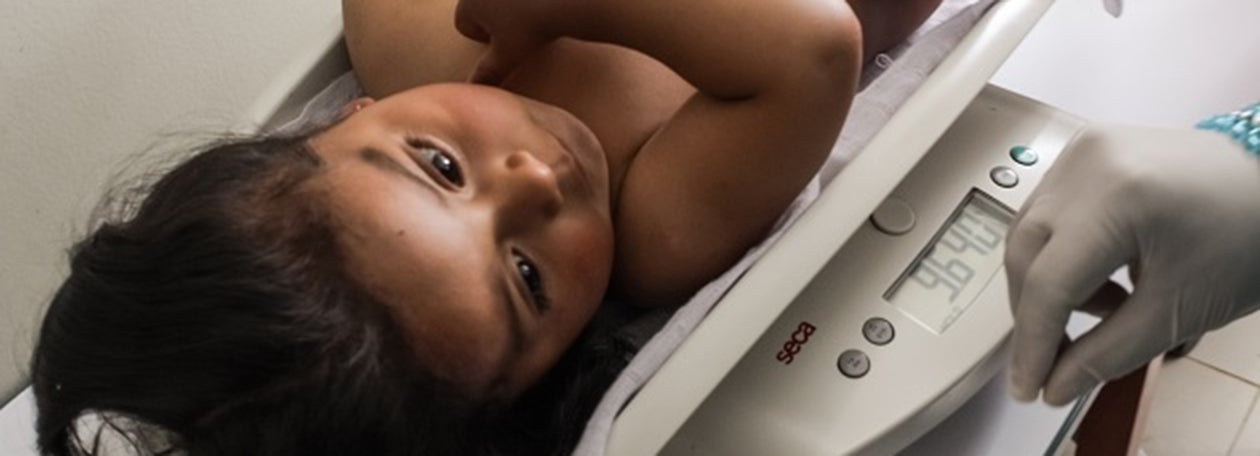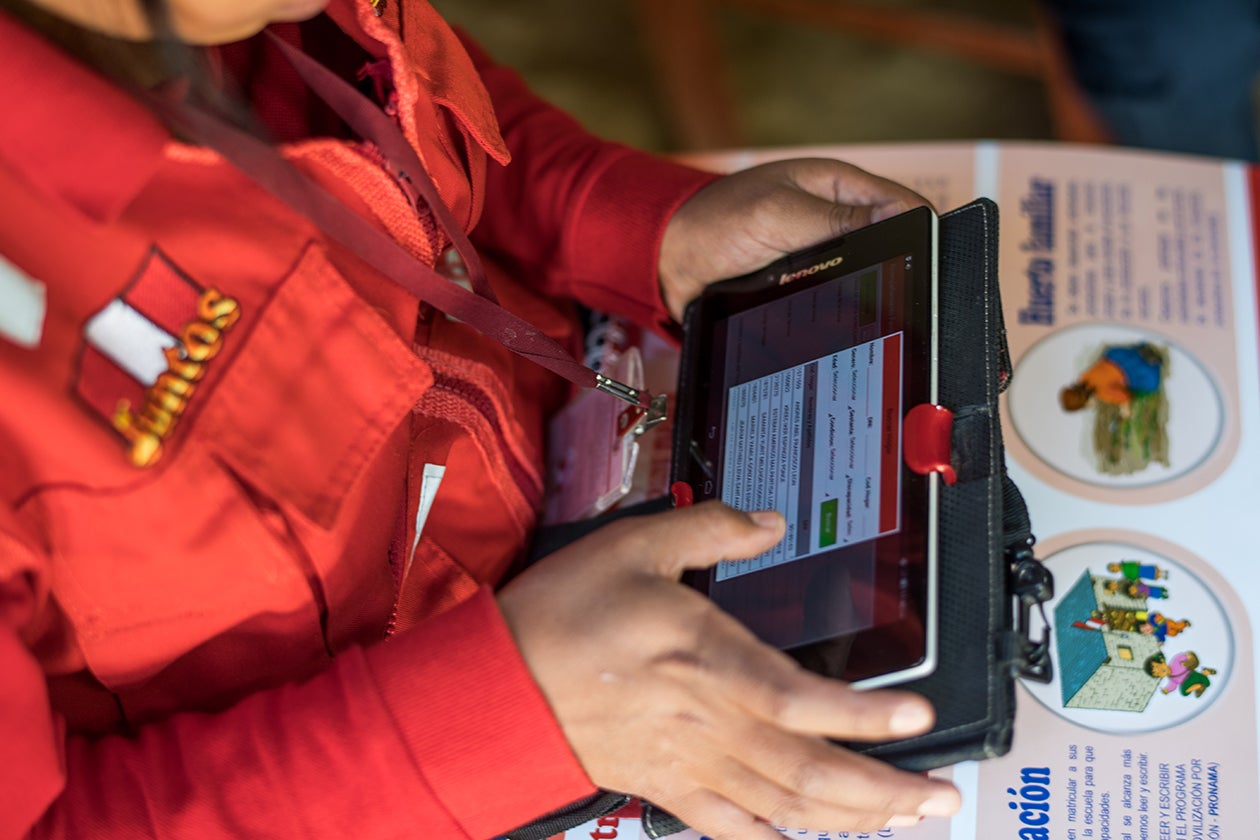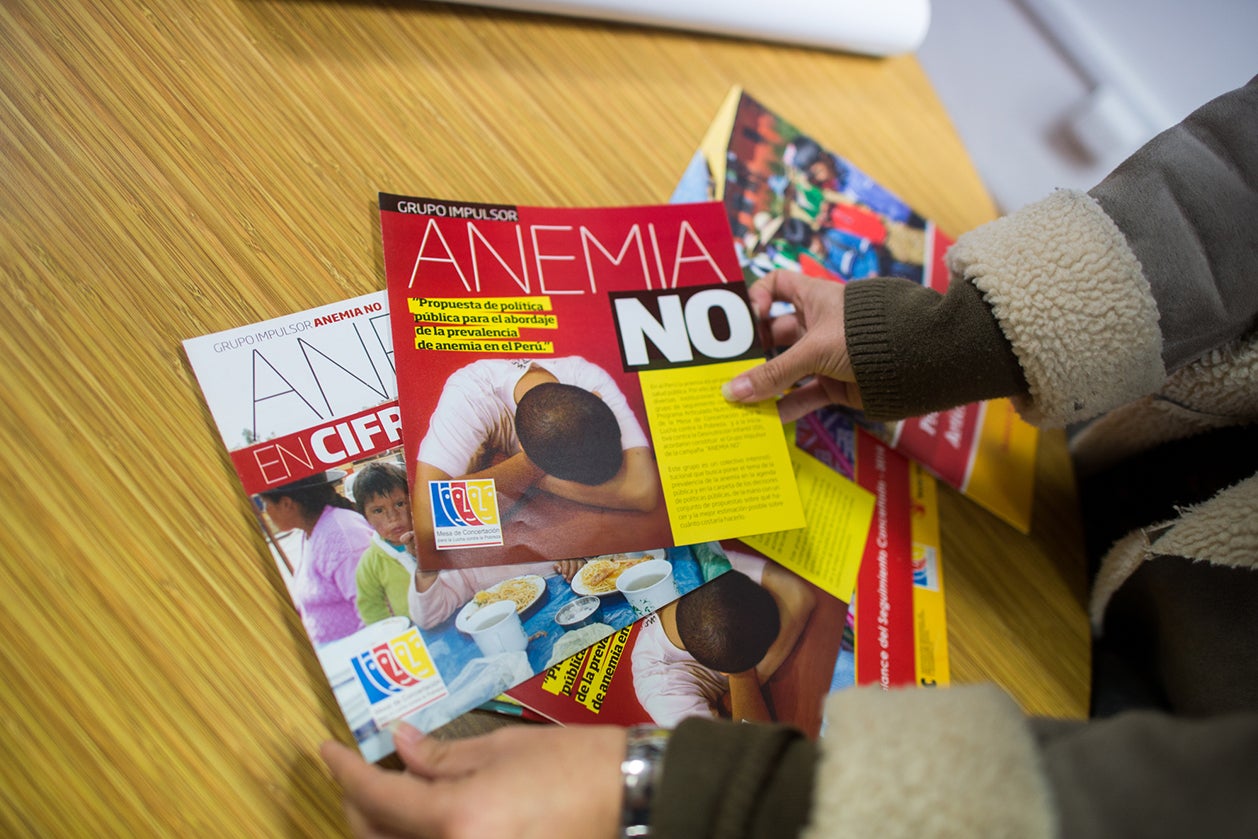KEY POINTS
While Peru has achieved a dramatic reduction in stunting prevalence, important challenges remain. A few stand out as being particularly representative:
Iron supplementation:
Lack of clarity on delivery mechanism led to late scale up and low coverage.
Feeding program deprioritization:
Political popularity of feeding programs makes them difficult to phase out entirely despite having little to no effect on chronic childhood malnutrition.
Juntos implementation:
Local authorities sometimes alter conditions of cash transfer based on local policy priorities.
Geographic inequity and anemia:
Remote parts of the Andes and Amazon, particularly areas largely populated by indigenous populations, continue to have high rates of stunting. Anemia in both mothers and children remains unacceptably high.
Iron supplementation
At the inception of PAN in 2008, iron supplementation as an intervention was included for pregnant women and children under three years of age. While budget was prioritized for child growth monitoring, PCV, and rotavirus vaccine, iron supplementation was considered important enough to be elevated to a top priority under EuroPAN. However, intervention coverage rates remained low and stagnant throughout most of PAN’s history.
Part of the difficulty derived from lack of clarity regarding the ideal delivery mechanism for iron supplementation. Until 2009, a syrup was used; however, an investigation was then carried out to determine whether sprinkles (multiple micronutrients in powder) would be superior for acceptance and adherence. This investigation took time; by late 2010, there was still no official recommendation from MINSA. In 2012, the use of multiple micronutrient powder was finally given official blessing; however, supply of sprinkles was not scaled up until mid-2014.
Today, adherence to the iron supplementation regime remains low in some states: of those who received iron supplements, more than 60 percent do not have a follow-up visit.

Juntos implementation
Juntos and other national-level programs depended on local authorities to operationalize. Based on local circumstances, Juntos was often implemented differently in practice from how it was intended by national planners.
Prior to 2011, NGO partners frequently contributed inadvertently to the addition of Juntos conditions and complementary activities that were inconsistent with those of the national program. For example, in order to help implement a German-funded clean cookstoves program in Ayacucho, the regional government instituted use of clean cookstoves as a Juntos conditionality. Other unofficial local conditions (e.g., requirements to consume leafy green vegetables) were also added on by local officials without any oversight from Lima.
Since the inclusion of Juntos under MIDIS, enforcement and monitoring of cash transfer conditions have become stricter, and these complementary activities have been officially removed.
However, “shadow conditions” remain a part of Juntos today. School principals, for example, may encourage local Juntos program managers to add additional education-related conditionalities; similarly health facility administrators may require that new mothers give births in facilities as a condition of Juntos to help their facilities reach in-facility birth targets.

Feeding program deprioritization
Vaso de Leche (Glass of Milk), launched in 1984, is a food supplementation program which provides milk, milk substitutes, and other food, to children under six years old, pregnant and breastfeeding women, poorly nourished people of any age, and anyone with tuberculosis. The program, funded by the Peruvian Treasury, provides an estimated four million Peruvians with daily rations of 250 milliliters of milk, cereals, and other unprepared food products.
Since the mid-2000s, child health and nutrition experts in Peru have reached a consensus that the evidence does not support the idea that Vaso de Leche or other feeding programs could have an impact on childhood stunting. While there may be benefits for older children and families overall, in the form of an in-kind subsidy, feeding programs have not been linked to reduced stunting. As such, an important component of the Crecer strategy involved deprioritizing feeding programs within the public budget.
Yet, Peru continues to spend about $100 million each year on Vaso de Leche alone. Other food assistance programs cost even more - as of 2009, Peru spent $375 million overall. While Crecer has been able to stem the increase of funding toward unproductive feeding programs, it has not been able to shift funding away from programs like Vaso de Leche towards other interventions that have proven to work.
While feeding programs do have potential benefits beyond child nutrition (e.g., school feeding programs can help keep children in school), the primary reason for the entrenchment of Vaso de Leche and similar programs is likely political. Feeding programs have become a popular entitlement, and any officials that attempt to shift funding away from these programs do so at their own political peril. As such, a decade after academic, civil society, and government leaders came together to confront evidence of the failure of feeding programs to make any meaningful impact on chronic child malnutrition, these programs remain hard to phase out entirely.
Geographic inequity and anemia
The fight against stunting, while impressive so far, is not finished, with a national stunting rate that is still unacceptably high at 13 percent and rates that are consistently higher in the Andes and the Amazon than along the coast. In the least successful states, the rate is still at emergency levels. For example, one in three children in Huancavelica, a state in the Andes, is stunted today.
Peru also bears a dual burden of stunting and obesity, although obesity has also declined some from a national rate of 12 percent in 2000 to seven percent in 2012. Obesity is more common along the coast, with 20 percent of children in the state of Tacna being overweight, the highest in the country.
Anemia is consistently high across the country—both among pregnant women and children—but it is particularly elevated in the Andes and the Amazon, where rates tend to be well above 50 percent among children and approach 50 percent among women of reproductive age.
The Initiative against Chronic Infant Malnutrition, which still exists, reorganized its advocacy around the crisis of anemia several years ago, and the government recently approved an anti-anemia strategy based on many of the lessons learned from the anti-stunting strategy. Although the strategy is still in the process of being implemented, Peru is targeting a 20-percentage point reduction in anemia by 2021.

